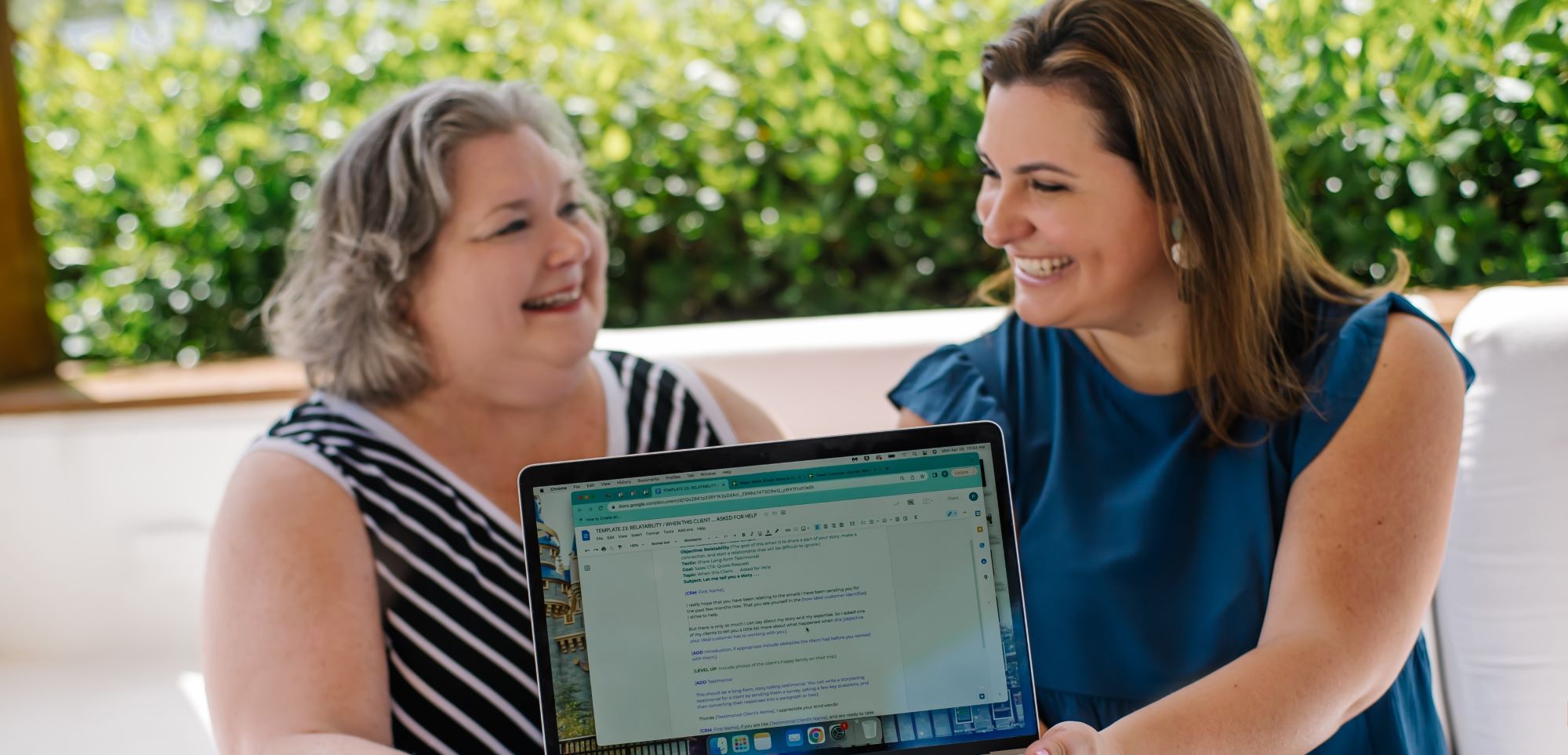For travel advisors, emailing clients is a heavy lift. And while it’s a necessity, it can feel like a distraction from the more fulfilling tasks of the job — not to mention a frustratingly unbillable step in the process.
Travel advisors Penny Cooper and Christina Vieira came from corporate and tech marketing backgrounds respectively and were accustomed to automating streamlined email systems. But when they noticed peers across the travel industry struggling to keep up, they saw an opportunity and set out to create a tool for marketing and client emails that would ease the major pain point.
The result is their new company, Magic Made Simple, which offers efficient, effective templates for travel advisors to use in their businesses. Here are five of their top tips for creating successful email templates that earn positive attention, convert sales and grow business.
Make It Personal
It’s important to personalize the email to the client receiving it, but it’s equally important to personalize it as the sender. Including anecdotes or observations from your own experiences is one way to do that.
“Just as you have an opportunity to send certain emails to certain types of people to give them the content they want based on their pains and desires, you also have a chance to share personal stories because that’s what sets you apart,” Vieira said. “Putting yourself into it is going to deepen that connection with the traveler; it’s what’s going to keep them coming back again and again.”
Send Consistently
Some travel professionals fear that sending marketing emails too frequently will appear spammy and turn off clients. However, consistency is key to appearing dependable — and to keeping your business top of mind.
“We hear from people often that they don't want to overwhelm with too many emails. But when you keep it personal and you connect, you're providing value,” Cooper said. “And if you're giving them value and they know they can count on you, you're going to be welcome in their inbox.”
Use Calls to Action Strategically
First, define the purpose of each email before heavy-handedly including calls to action that don’t support the specific goal. While all marketing emails should contain a call to action, emails sent with the goal of building a relationship or loyalty might not need more than an invitation to follow the advisor on social media for an inside look at an upcoming trip.
In all cases, the approach should be mindful and strategic. “Many travel advisors send their welcome-home email like it’s the last email they’ll ever send to their clients: welcoming them home, collecting feedback, asking for testimonials or referrals and asking where they want to go next,” Vieira said. That’s too much for a single email. “By turning that one email into a series of follow-up emails, you’ll reduce the number of calls to action and continue the conversation with the client organically.”
Use Visual Cues to Help Content Stand Out
Instead of one big block of text, use visual indicators to break up the content and draw readers into key parts. You might do this by adding video, graphics or leaning into brand colors to draw attention. Cooper also suggests adding a downloadable — like a tip sheet on minimum height requirements at Disney — that “pops out of the email” visually and offers value.
Nail the Subject Line
Email recipients are likely to scroll through their inboxes and make determinations quickly about what to open immediately, save for later or delete altogether. A catchy, conversational subject line is essential.
“There is no subject line that’s going to get every person to open,” Cooper said. But when you focus on putting together a resonant subject line for your ideal client, they’ll open immediately “because they feel like you’re talking right to them.”
Originally appeared in the Fall 2023 issue of The Compass magazine
About the Author






comments